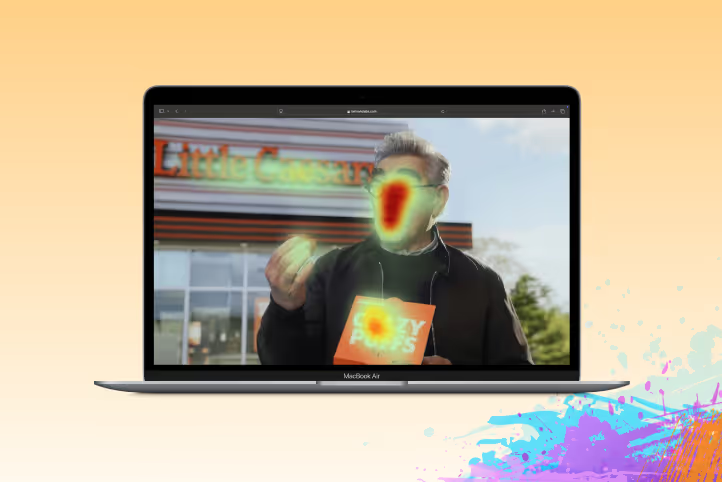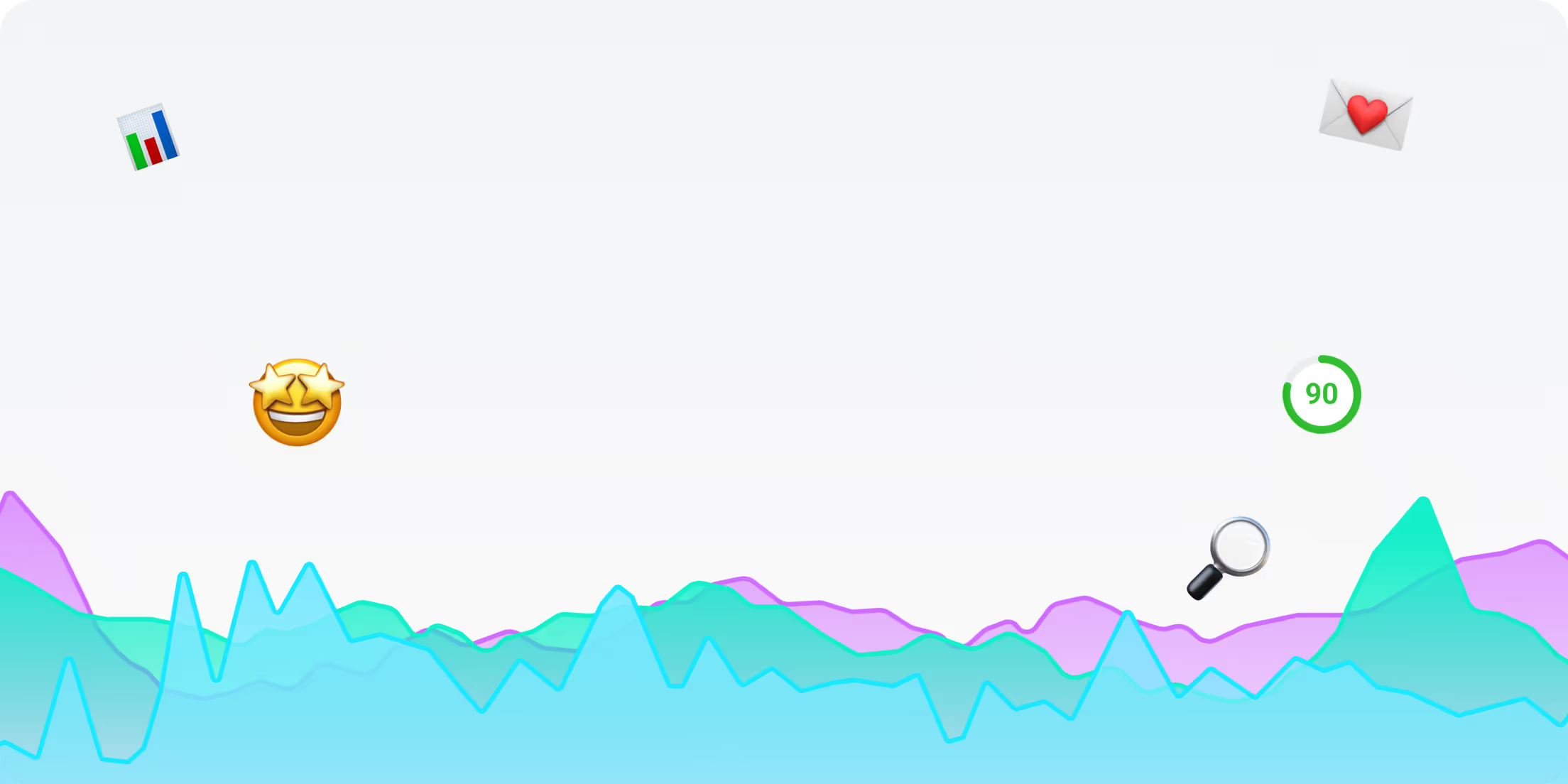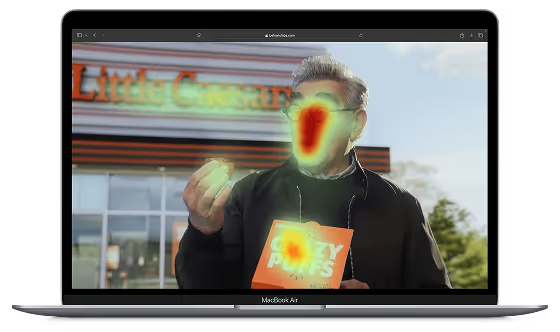An unsuccessful campaign can mean thousands of dollars down the drain, so creating ad concepts that truly resonate with your target audience is crucial—for both your brand and your budget.
While you may have a hypothesis about how customers will react before airing your ad, you can never be quite sure.
Or can you?
That’s where ad testing comes in.
What is ad testing?
With ad testing, you can evaluate various ad formats at different stages of development to determine their effectiveness and how well they resonate with your target audience.
For a deeper dive into the basics of ad testing and how it can boost your ROI, check out our guide on the topic.
Sadly, ad testing isn’t a simple process that most brands or agencies can take on themselves. That’s why many turn to proven solutions that take on the heavy lifting—phew!
But here comes the hard part, with so many ad testing tools out there, how can you possibly decide which one is right for your brand?
We’re here to help—let’s talk about five of the best ad testing solutions on the market today, and break down the key strengths and potential limitations of each.
By the end of this article, you should be able to confidently choose the best platform for conducting your ad tests.
.avif)
Market leader: Kantar
Since its inception more than three decades ago, Kantar has established itself as a leading force in the market research industry, known mainly for its robust and reliable network of respondents across more than 90 markets.
A key aspect of its offering is the LINK+ ad testing solution, launched in June 2023, which enables customers to measure the impact of their digital, TV, print, or outdoor ad creatives.
LINK+ is available as an automated, self-serve, or serviced solution, allowing you to choose the option that best suits your needs and budget. Brands who opt for the serviced solution can work directly with Kantar’s team to set up, launch, and make sense of their ad tests.
The upsides
Kantar LINK+’s strength lies in the extensive data it’s built on, as it is “backed by the world’s largest ad testing database of 260,000 ads”. This allows you to benchmark your campaign against a broader range of competitors, a larger market, and industry standards.
The ad testing solution’s automated features also allow for a quick turnaround time of as little as six hours–a plus for marketers who need to test ads in a time crunch.
The downsides
Despite its extensive benchmarks, Kantar’s methodology lacks the nuance of ad testing surveys based on behavioral science, meaning it cannot truly predict an ad’s commercial impact.
Unlike some of its competitors, LINK+’s ad test results don’t provide you with second-by-second insights into respondents’ emotions or capture their verbatim opinions through open-ended questionnaires.
The tool also relies on a relatively small sample size of only 150 or less–which may affect the reliability and generalizability of the ad test results.
Kantar LINK+ plans & pricing
Pricing depends on your market and service level. In the United States, self-serve starts at $4,500, while serviced options begin from $8,080 and (in most cases) run up to $15k.
Methodology pioneer: System1
Originally established under the name BrainJuicer, System1 emerged in the late 90s as a strong challenger on the market, and later pioneered the use of predictive analytics grounded in human behavior.
This new methodology was groundbreaking in the field of advertising research, as it allowed marketers to predict the commercial success of their campaigns more accurately.
Since the industry shifted to this behavioral-based approach—moving away from the traditional methods used by Kantar—the effectiveness of pre-testing ads has significantly increased.

The upsides
System1’s Test Your Ad platform allows marketers to predict the commercial potential of their ad creatives by using behavioral metrics like emotional response and brand fluency.
Unlike some other solutions, System1’s ad metrics are split between long-term market share growth and short-term sales impact, providing marketers with a better picture of how a campaign may influence their overall strategy.
Another unique element of System1's ad testing solution is its FaceTrace feature, which tracks respondents’ real-time emotional responses to different moments in the creative. It should be noted, however, that the accuracy of facial coding technology remains a topic of debate among researchers.
The downsides
Like Kantar LINK+, System1 relies on a limited number of respondents for each ad test. With a standard sample size of around 150, it falls short compared to ad testing solutions like Behavio, which capture a more reliable snapshot with representative sample sizes of 500 or more.
The solution’s methodology also has its limitations. For example, it measures long-term advertising effectiveness solely based on respondents' emotional responses, and calculates fluency by the percentage of viewers who recognize the brand at the end of the video, which may not accurately reflect the actual attention given to the campaign.
System1 plans & pricing
Marketers can choose from seven different products depending on whether they want to test ads or brand assets, and the level of depth they’d like in the final results—ranging from options like predict and understand to compare and improve.
Pricing for the Pro option begins at $11,250 per ad.
Best price-to-quality: Behavio
Since its entry into the market a decade ago, Behavio has established itself as an affordable and practical alternative to System1’s ad testing methodology.
By combining carefully curated qualitative and quantitative data, including subconscious behavioral measures that best predict sales, Behavio offers a blend of modern metrics at a fraction of the traditional ad testing cost.
As Hannah Montana puts it, it’s the best of both worlds.
Specifically, the company’s ad testing solution utilizes advanced behavioral science methods, including randomized control trials (RCTs), implicit association tests, and emotional diagnostics, to measure advertising effectiveness.
%25252520(2).avif)
The upsides
With a pool of 500 online respondents per test, Behavio’s sample size is more than three times that of Kantar and System 1’s defaults, maximizing both precision and representative coverage.
On top of rock-solid quantitative data, the platform offers benefits traditionally associated with old-school focus groups, delivering qualitative insights through second-by-second emotion word clouds and verbatim quotes from respondents.
What truly sets Behavio apart from competitors is its 'Key Insight' feature, which delivers specific, actionable recommendations to improve the creative.
The downsides
It’s worth noting that due to the size of its respondent base and the depth of its ad testing methodology, Behavio’s turnaround time of 3-5 days can’t quite compete with that of solutions like Kantar LINK+.
Although Behavio uses substantial benchmarks based on currently aired ads, it lacks the extensive benchmark database of Kantar and the ability to segment benchmarks by industry or channel, as offered by System1.
Behavio plans & pricing
Behavio offers yearly Starter and Pro plans, starting at just $2,000 per test. Clients can also opt for standalone pre-tests for $2,200 each.
Fastest solution: OnePulse
Brands and agencies that need to pre-test ad concepts immediately might find tools like Behavio less convenient due to their longer turnaround times. In these cases, ad testing survey platforms like OnePulse can come in handy with rapid completion times of as little as 10 minutes for hundreds of responses.
The upsides
Although the data from OnePulse might not be up to par with the depth and robustness of other ad testing tools, it can still provide a general snapshot of how consumers react to your ads.
The tool allows marketers to create and distribute an ad testing survey in a matter of minutes. To make the process even quicker, the platform offers an AI editor that can do a sum of the work for you.
Useful features like auto-translations and AI-powered result analysis can also help speed up the time it takes you to test ads.
The downsides
Compared to the advanced techniques utilized by the first three tools mentioned in this article, ad testing survey tools like OnePulse are much more prone to response bias and errors.
While Behavio uses sophisticated methods to filter out dishonest or invalid responses, quick survey tools like OnePulse do little to mitigate issues related to low response rates, non-representative samples, inaccurate answers, or misunderstandings of questions.
The tool also fails to offer guidance on how to apply the results to improve your ad. The survey might show that the campaign isn’t resonating, but what should you do next?
AI-powered insights: VidMob
In recent years, a new type of ad testing tool has emerged on the market–those that are exclusively powered by artificial intelligence.
Unlike the solutions we’ve covered so far, platforms like VidMob don’t collect data from survey respondents. Instead, they utilize AI to collect and condense data from various available sources.
VidMob analyzes and scores ad creatives based on best practices for different platforms. Each ad test aims to identify specific elements or moments for improvement, with the ultimate goal of maximizing the effectiveness of your ad spend.
The upsides
VidMob’s AI capabilities may be particularly useful for teams testing a high volume of content and creative elements.
The ad testing platform’s key strengths lie in its speed, efficiency, and hyper-focused goal of increasing revenue.
The tool also helps ensure that creative assets adhere to platform, brand, and DEI (Diversity, Equity, and Inclusion) best practices before they’re published to a wider audience.
The downsides
VidMob specifically interprets social media analytics such as clicks and impressions to measure performance. While these metrics can give you an idea of how well a creative is performing online, they don’t always correlate with actual sales.
Remember, a high number of impressions doesn’t necessarily mean people are paying attention to your ad!
This is where ad testing tools based on behavioral metrics offer more value in the long run. They provide deeper insights into how people are truly engaging with and feeling about your ad, giving you a clearer picture of its potential impact on sales.
Bottom line: what’s the best ad testing tool?
We’d love to give you a definitive answer (*cough* Behavio), but the reality is that each ad testing solution has its own pros and cons. The right choice ultimately depends on you and your team’s needs.
%25252520(3).avif)
If time isn’t a critical factor, look for a solution with a strong methodology that fits your budget. Schedule a few demos and evaluate which ad testing product best addresses your specific pain points.
So, is Behavio right for you? Let us convince you–book a demo.





.avif)






.avif)








